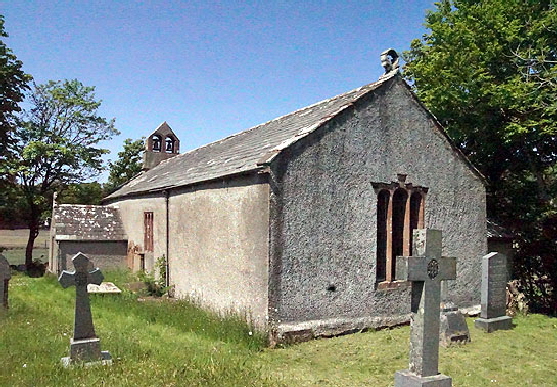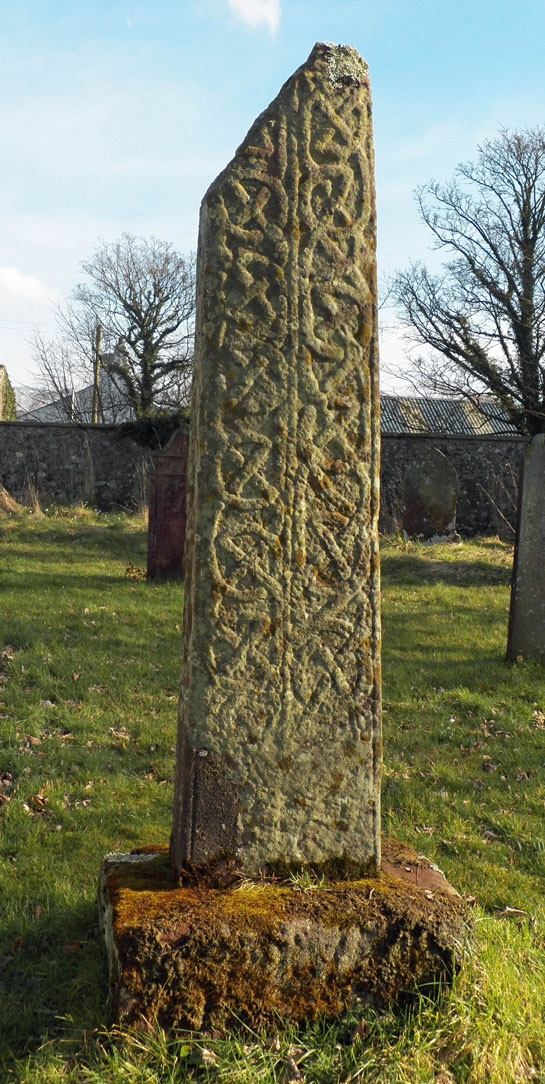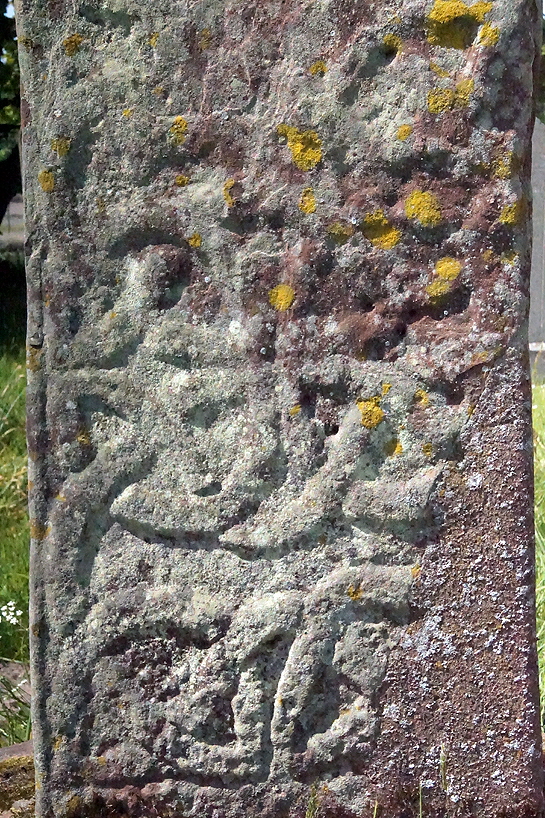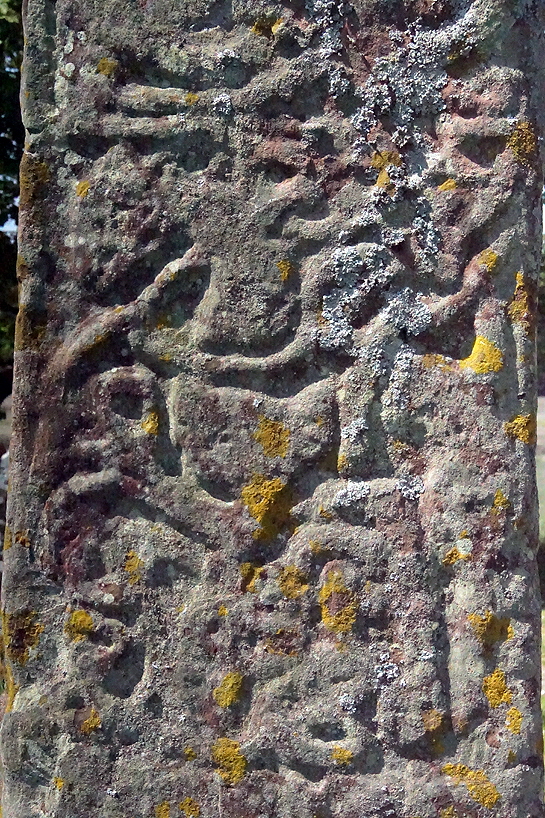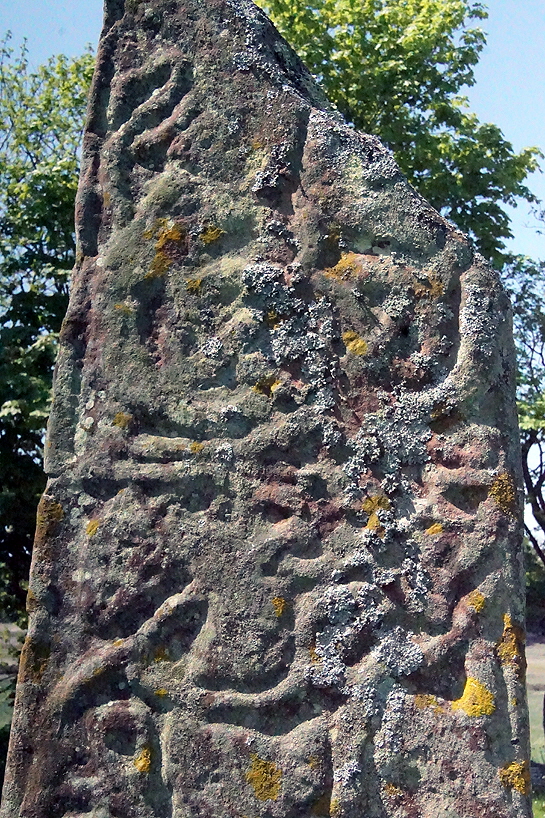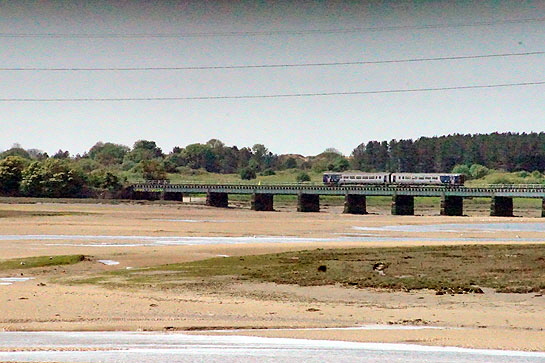|
Alphabetical List |
|
|
|
|
|
|
|
County List and Topics |
|
|
|
Please sign my Guestbook and leave feedback |
|
|
||||||||||||||
|
all of the churchyard crosses and preserved fragments in the old kingdom of Northumberland. One of these is found at Waberthwaite. Collingwood believed it to be ninth century and he usefully reminds us all that this part of the world was settled by the Angles, not the Saxons, and that this is therefore an Anglian cross. More of that anon. The church itself is a single room. Improbably, it seems it has been here since the twelfth century. That there was an even earlier church seems very likely given the the presence of the churchyard cross. There is also an very unusual sandstone font that seems to be very ancient. The proportions of the church - it is inordinately long - suggest that it has been extended eastwards at some stage, but this is just my own speculation. (Note: Since I wrote this Catherine Winzor has told me in 2020 that the west end timbers were felled around 1537 and the east end in 1675-1700 so it appears I was right). The windows are rectangular and must surely have replaced much smaller Norman round-headed ones appropriate to this exposed spot. The church has box pews. They were installed in 1809 along with a ceiling. The wooden pulpit is a nice little piece and dates from 1630. So to the churchyard cross. It is Anglo-Norse in design, and Collingwood, who studied the Northumbrian crosses in remarkable detail, puts it at mid tenth century. The Vikings were by now settlers rather than raiders and several crosses in this area have clear Scandinavian influence - see, in particular the cross preserved n Dearham Church which rather endearingly juxtaposes a wheel cross with the Tree of Yggdrasil - the Viking representation of the world. He was able to discern its decorative designs much better than we are today after another century of weathering. The Church Guide suggests that unspecified “archaeological” evidence suggest the cross to be eighth century and, therefore, “one of the earliest in West Cumbria”. I am conscious that I haven’t made much of a fist of selling this church to you as a place worth visiting. If you are in the area, however, and you have a keen awareness of spirituality on what was once of the edges of first millennium, and which is pretty “marginal” even today, then you will enjoy this place. Just think of it: Norwegian settlers and Anglian “residents (who has only been here for five hundred years themselves) getting together under the banner of a shared religious faith. Awesome - as my daughter would say! I would avoid it on a wet day, mind you! |
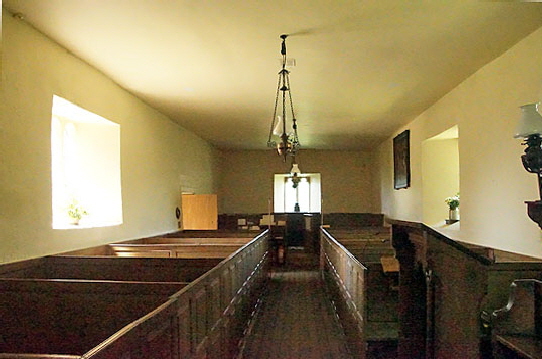 |
|||||||||
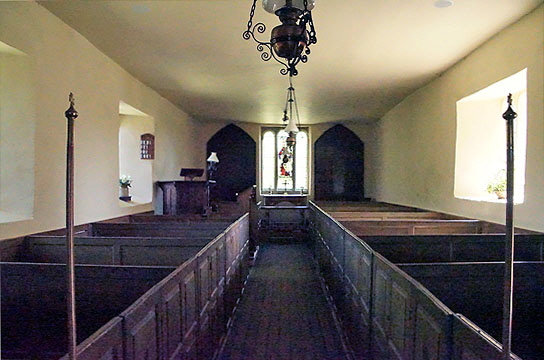 |
|||||||||
|
Left: The simple rectangular interior looking towards the east end where two tablets recite the Lord’s prayer, the Apostles’ Creed and the Ten Commandments. The Church Guide believes them to be late sixteenth century. Right: Looking towards the west. This is one of those very few churches that have as yet been denied the supply of electricity, as the oil lamps attest. |
|||||||||
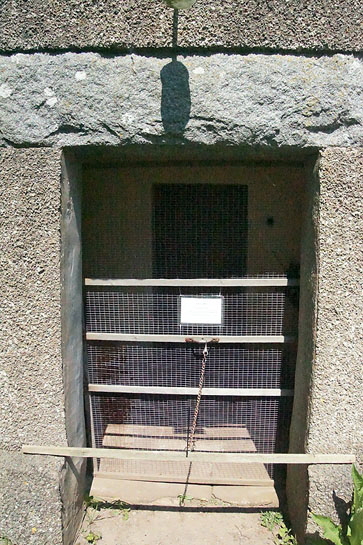 |
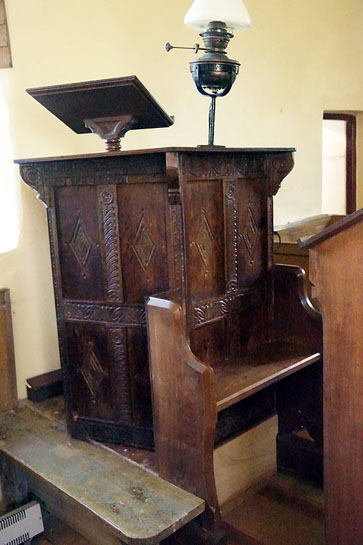 |
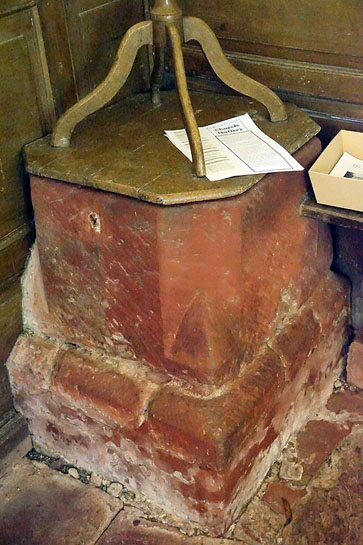 |
|||||||
|
Left: Your entry is through the south door with its enormous granite lintel. The Heath Robinson-like device is to prevent sheep getting in. It’s that kind of church. Anywhere else it is birds they worry about! It’s really easy. You just turn the piece of wood from the horizontal to the vertical, pick up the gate when it falls on you, dust down your trousers and in you go. Centre: It’s a homespun kind of place and even the nice little pulpit looks like it has been picked up at an Antiques Fair and just plonked down where there’s a bit of space. Since I wrote those words I was told by Catherine Winzor, a resident, via my Guestbook that it is a rarity and that it was originally a triple decker. Right: The font -surely Norman - is a real curiosity. It is carved from a single block of sandstone and has little chamfered corners. |
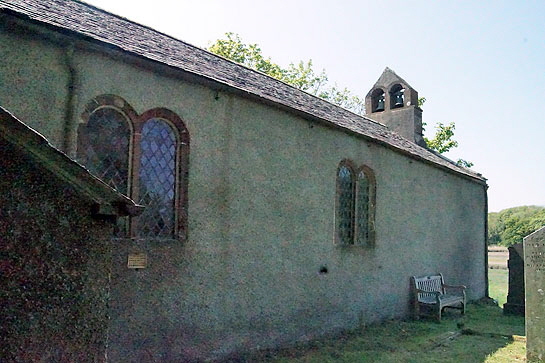 |
|||
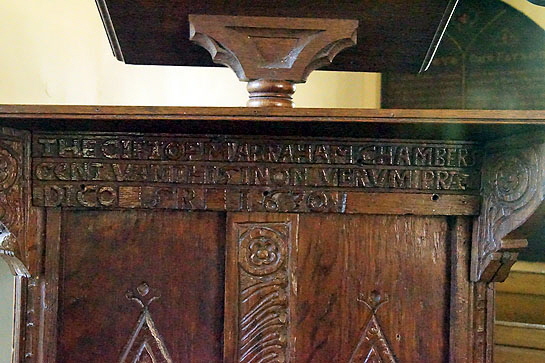 |
|||
|
Left: The pulpit is inscribed: “The gift of Abraham Chambers’ gent“ and then, in Latin, “Woe is me if I preach not the truth. SR 1630”. Catherine Winzor informed me that it a rarity in having an attributed maker. Right: Just in case you thought the north side might be more pleasing aesthetically, you can see that it’s nothing of the sort! If anything, being in shadow most of the time, it’s rather worse. The windows on this side are a kind of faux Norman. |
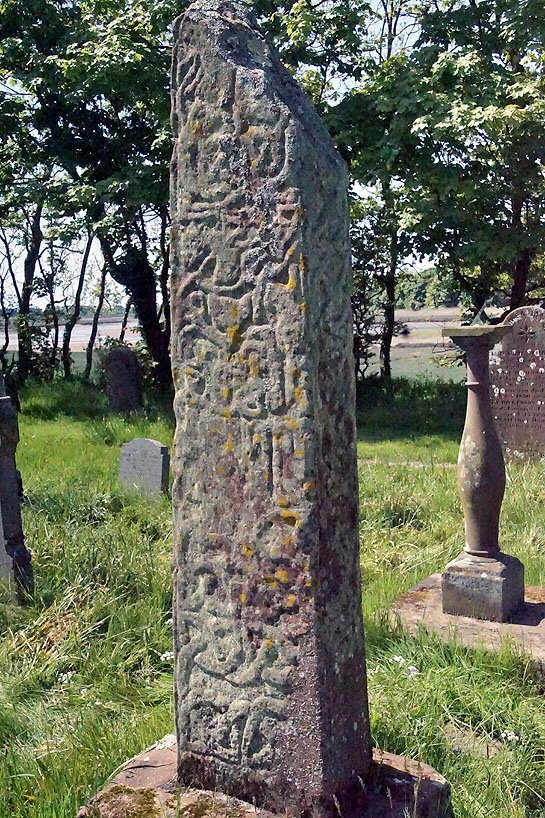 |
|||
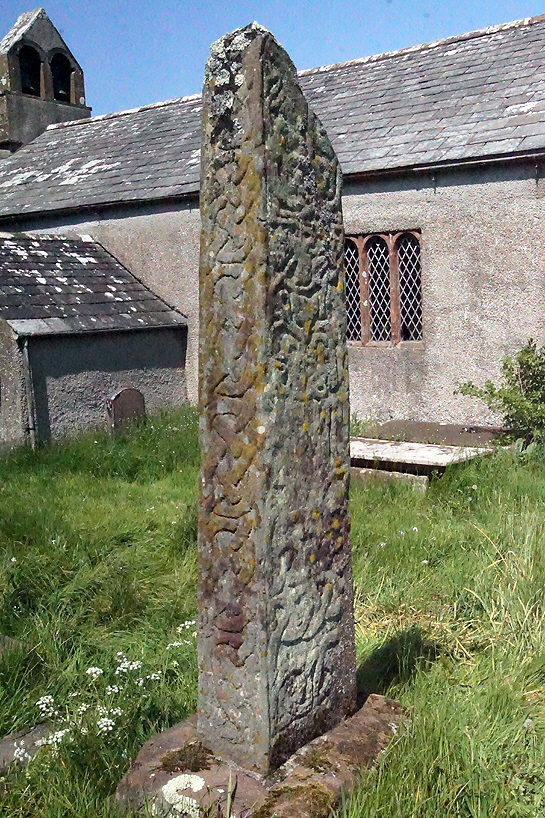 |
|||
|
Left: The cross looks rather a jumble until your eyes focus in. This is the east face. Easiest to discern is the bottom panel. This is a stylised decoration described by Collingwood as “four Staffordshire knots linked on a ring”. There is then a narrow band that Collingwood believed to have been blank (that is, not simply erased by weathering). The most exciting part is the next panel which you can just about make out as a horse entangled by tendrils. The head is top left and the hindquarters bottom right. Above that were two addorsed (back-to-back) birds. The right hand one has all but disappeared but the left hand one is, again, just about discernible. Right: The southern face - and as we shall see the northern face - has a knotwork design accurately described by Collingwood as the “Carrick Bend”. If you Google it you will see that is a real knot used for joining together two pieces of rope. |
|
|
||||||||||||||||||||||||||||||||||||||||||||
|
Left: The interlace work on the lowest panel of the west face. Right: The horse panel. Close up makes it harder than easier to make out the design. Most of the right hand side is the rear end of the animal. If you follow the leg almost on the far right you can see the carving curve to the left to form the back and body. The neck then stretches up to the left and above with the head almost indistinguishable at the top left. |
|
|
||||||||||||||||||||
|
|
